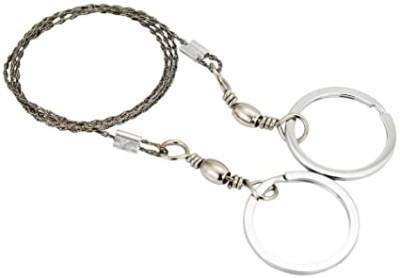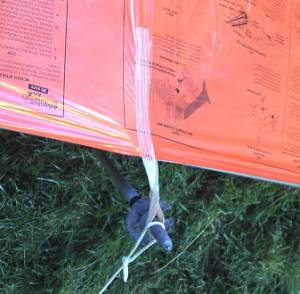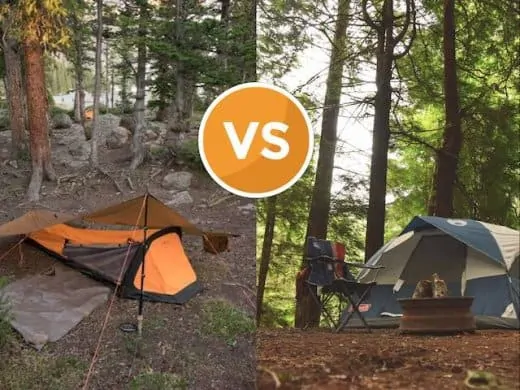Click for SiteMap
Table of Contents
Getting a Good Night's Sleep
Tent vs Bivvy
I am a side sleeper or prone sleeper. When I sleep on my back I suffer sleep apnea, so I avoid that position. That means no hammock for me. Can you sleep on your side/stomach in a hammock? Maybe someday I can fully try sleeping in a hammock. I would appreciate a solution in those damned cases where I can't find level ground.
Claminess of the Bivvy
I like the idea of a bivvy, but I have felt clammy in a tent, and bivvies are much worse, according to what I've researched before, and these sources:
https://backpackinglight.com/forums/topic/11442
https://www.reddit.com/r/Ultralight/comments/2j510g/will_you_sweatout_a_bivy_sack
Having chosen my tent based in part on how well it ventilates, I would only use a bivvy for backpacking through a desert. From the reddit link: “I recommend bivys to people camping in dry areas (deserts and dry mountains like the Sierras) and wouldn’t recommend them for camping in buggy or rainy areas or for sweaty people.”
With this in mind, I saw a light and cheap bivy available on aliexpress made of Tyvek. Tyvek is more breathable than Gore-Tex. Though still not as breathable as a bare sleeping bag. Waterproofness depends on Tyvek thickness. Some people testing Tyvek for waterproofness may not realize that when conditions are very humid, their perspiration will drench them as tyvek does present a formidable vapor barrier.

Protection from Critters
For the bivvy, I would also want a mosquito net and some room to move within. But having a mosquito net is a lot like having the inner shell of a regular tent, and the fly of the tent correlates with the tarp you would use with a bivvy. You wouldn't have any weight savings.
While you wouldn't have to worry about mosquitoes in the desert, there may be a friendly neighborhood rattlesnake. You ultralight bivvy and down sleeping bag may not protect you when you roll over onto the rattlesnake that is snuggling up to you for warmth.
Tarp: The Ultralight Ultimate Shelter
Let's snuggle with the critters! If your tarp does a good job of covering you, then you don't even need a bivvy. For a mosquito net, wear one of those mosquito net hats or use a mosquito net umbrella. Or coat your gear with permethrin, and wake up in a pile of dead mosquitoes in the morning.
All you need is the ground cloth, the sleeping pad, and your cozy sleeping bag. Your backpack won't know what to do with all that space.
You could get snazzy with a custom inflatable mosquito net, that weighs 320 grams, but a mosquito net added to an umbrella serves the same purpose.


One downside, is that the tarp-tent is not free standing. I've been on a mountain where I couldn't find anything to dig stakes into. You could make due with tying guy lines to roots, shrubs, or rocks, but your choices for setting up can be limited. When securing a line with a heavy rock, first tie the line to your tent stake, turn it sideways and place the rock on top. If you can't find a big rock, place many rocks into a stuff sack. You can extend the guy lines out quite far with additional rope (example: “mason's line” aka braided nylon).


Picking a Spot
- Find a level spot to avoid tent surfing.
- Look out for trees with dead branches that may fall on your tent.
- Choose high ground, so that rain will not pool under your tent.
- The ground cloth should not extend outside the tent floor, so rain does not get funneled under the tent from the tent fly onto the ground cloth.
Clearing Out The Brush
Sometimes you need to clear some brush in order to take advantage of level ground for your tent site. That brush is often filled with thorns. Some pruning shears would really be useful about then, but even ultralight pruning shears would be rather heavy. Instead, use a survival wire saw to cut through those vines. Thread the wire saw underneath them, then bring them together while also stepping on them to lower them to the ground. The saw will make quick work of them.
In case it is a thorny bush instead of some vines, try to dig it out from its roots, or use the saw to cut the base. You can make that saw into a bow-saw by finding a branch and bending it to the ends of the wire saw, although finding the right size bendable stick may be a challenge.

Protective Ground Sheet
While ultralight purists will do without a ground sheet, a ground sheet will maintain the waterproofing of your tent floor. A ground sheet made of tyvek is both a lightweight and durable alternative to the heavier ground sheet made by the manufacturer. You can optionally tape and sew some paracord to the corners if you like a fancy way to keep the ground sheet centered under the tent.
Staying Warm in the Cold
Freezing cold will inhibit function of your fuel, or outright damage your water filter, and any devices with batteries, so it's important to wear these in a pocket during the day, and keep them in your sleeping bag at night.
Sleeping Bag, Sleeping Pad, and Reflective Ground Tarp
More about sleeping bags in the "clothing" article.
Hot tip: some apps allow you to input the exact location (gps coordinates) for the forecast, which takes into account the altitude.
You select the sleeping bag and sleeping pad based on the expected forecast temperature. More about combining sleeping bags with the sleeping pad R values: https://backpackinglight.com/sleeping-pad-r-value-not-that-useful
The ground cover to protect your tent can be made of Reflectix insulation, which has a shiny side to keep you from losing radiative heat, and increases the R value of your sleeping pad. Note that some pad manufacturers may already make use of reflective material within the pads, and you do not benefit from an added reflective layer underneath. See https://www.quora.com/Will-a-reflective-surface-such-as-aluminum-foil-continue-to-reflect-radiation-if-a-blanket-is-placed-over-it.
Alternatively, using some dried grass or weeds under your tent (those without thorns), will provide natural and very effective insulation.
Only about 1/4 or so of your conductive heat loss is through your pad. A few degrees of variation between a winter pad and a summer pad are generally enough to make up for most of the inbetween temps. I *might* use a thicker bag a bit sooner in fall, but continue to use the same pad.
There is a big difference in the “ground.” Dark, wet soils are more conductive of heat than soft dry duff. Rock and ice is more conductive than snow by a large difference. A summer pad (say a NeoAir) may be fine down to -20C when put on top of forest duff. Put the same pad on open rock on a hill top or out in the middle of a frozen lake, and it could not keep you warm at 0C. source
I suspect that you either need a pad with an R value of 1 for the summer with a low of 50F, or you automatically switch to an R value of 6 or higher for 50F or colder. Especially with down sleeping bags that have little insulation at the contact points.
Some pads are more comfortable than others, especially for side sleepers like me. I found the big agnes air core really comfortable, but needed a pad with insulation for colder weather. I got the klymit insulated static V, with an R value of 4.4. It isn't very comfortable, and I will thus be looking for another pad. I tend to feel cold more easily than others, and found it to be a pad that is not sufficiently warm but perceptible warmer than the air core. To be fair, the temperature I slept in was lower than the rating of my sleeping bag. Though I wore a base layer and puffy jacket to sleep, my contact points felt cool: not a cool that makes you shiver, just not the epitome of comfort.
While the community has come to the conclusion that a pump sack is not necessary for inflating a pad, I don't feel comfortable with that conclusion. This video makes it absolutely clear there is no problem. However, the guy in the video is Devin Ashby of Waymark Gear Company, who lives in low humidity Utah. Check out this video by Deadpan Neemor who hiked the Appalachian Trail with his Xlite pad, who shows mold growing inside with light from the window. Devin's response to being shown Neemor's video: “Consider that air moving through the baffles will capture the moisture at the head end closest to the valve. It’s also likely that my drier environment played a key role in mold not growing. It’s still very possible that mold could grow in more humid areas.”
“Always use a pump sack (I use a garbage bag with a piece of 5/8″ hose) to fill your NeoAir. I weighed mine in Andover, ME and it had gained 8oz just from the moisture of my breath.” Rooster 2014
Warm Stone Method
If you heat a large stone by placing near the campfire, you can clean it off and bring it in the tent when you turn in for the night. Place another stone over the fire's remaining embers, so if you wake up at night you will have another warm stone to fetch. Use your camping towel if the stone is too hot. If the stone is warm but not hot, you can place it at the foot of your sleeping bag.
Hand Warmer Method
Alternatively, you can use hand warmers and layer them between two pairs of socks for your feet. Fleece slippers or down booties also work well for this. The hand warmers will last all night.
Sleep on the Fire Pit Method
Another option, is to cover the fire completely in sand or dirt, and then place the tent right on the fire pit. This works easily on the beach, but it can work with dirt if you first dig a pit for the fire.
Baker Tent Method
If you gather enough firewood, you can keep a fire going all night. Pitch your tent close to the fire, but not too close where sparks from the fire may burn holes. Actual baker's tent use canvas that has been treated with fireproofing. “We sometimes get asked if we could include a midge netting in our tents, but these nettings don’t work well with the idea of a campfire tent. Sparks of the fire can burn holes in them and generally they are just not as robust as all the rest of the materials used.”
To reflect more of the warmth of the fire to your sleeping spot, use reflective mylar blankets, or a reflective tarp. They can work well slid between your inner tent and rainfly. The point is to use them like mirrors to concentrate the light of the fire to your sleeping bag. I'm going to be trying out the Adventure Medical survival blankets, a large size made for two persons. Apparently they are made a little thicker and less tear-prone.
How close to the fire can you be?
Smokey the Bear recommends 15 feet.
Winsor Fire recommends 6 to 10 feet
Bass Pro recommends 10 feet
Montem Life recommends 10 feet
My Open Country recommends 10-15 feet
So it looks like 10 feet is the going rate. However, traditional baker tents don't have modern ultra-thin 10D fabric, and won't get a hole just because of a little bitty spark. This guy has been making a modern version of a Baker Tent, and it get pretty toasty even in freezing weather:
tW3OSPhfPMw
Log Torch Method
QeHGDr81XwM
Extra Cover
Umbrella
When it looks like I'll be hiking in the rain, I'll bring along a mini umbrella. Yes, I'll have a poncho too, but I won't put it on unless I absolutely have to. It's humid enough without having to be covered in a layer of plastic. Zpacks makes an ultralight umbrella that weighs 6.8 oz (192g). Is that really lighter than other umbrellas? I have a cheap Esprit umbrella with 38“ open diameter that weighs 6.3 oz (178 grams) and has a closed length of 9 inches. Compare with others.
Hands free: https://www.theultralighthiker.com/2017/12/14/a-hands-free-umbrella/
You can also use an umbrella to catch rain if you are not near a water source.
You can also add mosquito netting and a draw string to secure to your body.

Poncho
Ponchos let you breathe better than rain jackets, especially if they also cover the backpack. A poncho can also function as a tarp, although an experienced backpacker insinuated that dedicated ponchos and tarps are better. “I learned that poncho-tarps are best used as “just in case” rain gear or shelter, not for regular use.” andrewskurka.com
Tarp
The vestibule of my tent works for most things, but in situations where you want to enjoy a panoramic view outside of your tent fly, a tarp with grommets and some guy lines can provide an outdoor shelter. Bonus if the tarp is aluminized on one side (mylar). You can use the reflective side to heat or cool, depending on which way you turn it. Not only outside of your tent, but inside as well. Even without a fire, the tarp can reflect your own radiative heat back at you. With a fire, set yourself between the tarp and the fire for added warmth.
Reflective coatings are not durable, so heavy duty “emergency” blankets with tape on each corner provides reasonable sturdiness that can be replaced inexpensively when the coating starts to wear off. The following description from nsherry61 on WhiteBlaze.
1) Heatsheet (modifications were the ties-outs made with strips of 1 inch filament strapping tape. These were placed in a way to spread the stress up into the sheets instead of stressing just the edge. I didn't do any edge reinforcements. I just ran the corner tie-out tape strip about 10 inches, or so, up into the sheet material from the corner and the side tie-outs up about 6 inches in from the edge.
2) The other key to success was that all my guy lines had rubber bands on them as shock absorbers so the system gave nicely when hit with strong gusts of wind without overstressing the “fabric”.


Waterproofing Redundancy
To keep your gear dry, especially your sleeping bag, use a rain cover, backpack liner, and dry bag. Apparently, hard rain is very persistent. Except for Bob Gross on backpackinglight.com forum: “Whenever I purchase a new backpack, I spray a little waterproofing spray over it, either inside or outside. The result is something that is virtually waterproof.”



Discussion